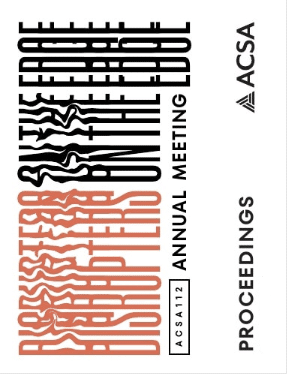Author(s): Gorhim Bird, Jennifer Pindyck, Mark Alan Blumberg & Mary English
It is important for students to confront sites that provoke critical discussions around ownership, politics, race, history, and basic human rights. Students explored the intersections of history, symbolism, form, and design within the context of a former site of enslavement registered as a national historic place2_. An organization which provides individuals over the age of 50 with opportunities for community and learning is interested in expanding their facilities on their existing site. The program, although client conceived, was the subject of a discussion with the students as to what programmatic characteristics are appropriate for this site. The problem is rife with dichotomies: its horrific past and landmarked status, and the question of how to approach the memorializing of this place. The recognizable image of the architecture is what makes it both a valued historic place yet also a painful reminder of oppression. The framing of the design problem was formed through historical analysis of the 1700-acre Sunny Slope site (Figure 1) as a site of enslavement of men, women, and children. Students analyzed the existing site to understand how formal strategies were used to establish power over the landscape through central axes and visual hierarchies3_. The complex reality of the historical context requires thoughtful consideration. As Zumthor expresses in Thinking Architecture, the projects would need to dialogue in a meaningful way with the existing architecture and landscape, “for if the intervention is to find its place, it must make us see what already exists in a new light.”⁴.
https://doi.org/10.35483/ACSA.AM.112.99
Volume Editors
Germane Barnes & Blair Satterfield
ISBN
978-1-944214-45-6

 Study Architecture
Study Architecture  ProPEL
ProPEL 
